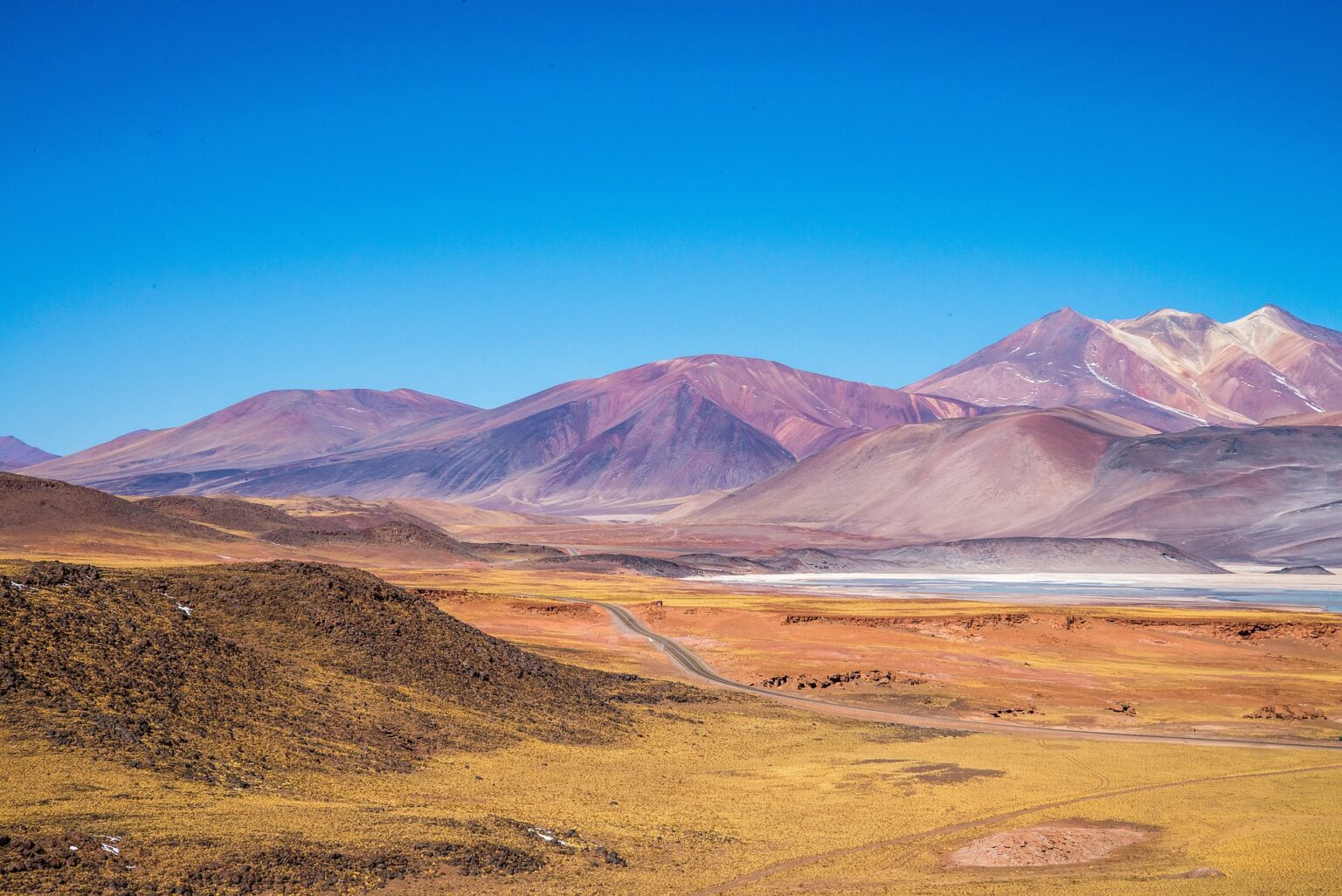Nestled along the Pacific coastline of northern Chile, the Atacama Desert is one of Earth’s most extraordinary landscapes. It stretches over an impressive 100,000 square kilometers, resting between the Andes Mountains and the Pacific Ocean. Characterized by its stark beauty, vast salt flats, rugged topography, and arid climate, the Atacama has earned its title as the driest non-polar desert in the world. Yet, despite its harshness, it is also one of the planet’s premier destinations for stargazing.
The Arid Marvel of the Atacama
The Atacama Desert’s extreme aridity can be attributed to a combination of climatic factors. Most notably, it lies in the rain shadow of the Andes Mountains, which block moist air masses from the Amazon Basin to the east. Additionally, the cold Humboldt Current along the Pacific coast further inhibits the formation of moisture. As a result, some weather stations in the Atacama have never recorded any rainfall, while other regions might experience precipitation only once a decade. The hyper-arid core of the desert features some areas where researchers believe it has remained dry for up to 400 years.
More: Read about on Gobi Desert, Mongolia: Experience Nomadic Culture
The landscape of the Atacama is otherworldly, featuring a blend of salt pans, sand dunes, volcanic peaks, and lunar valleys. The Valle de la Luna (Valley of the Moon), for instance, is a mesmerizing expanse that seems transported from another planet with its sculpted rock formations and endless stretches of white salt. Giant cacti dot the landscape in certain areas, while colorful lagoons, such as those found in the Atacama Salt Flat, offer a stark contrast against the otherwise barren backdrop.
Scientific and Cultural Importance
Despite its initially uninviting appearance, the Atacama Desert is teeming with surprising life and historical significance. Ancient petroglyphs and ruins reveal a history of human habitation dating back thousands of years, with indigenous Atacameño peoples having adapted to life in this arid world.
The desert’s geology has also made it a focal point for scientific research. Its Mars-like conditions make it a prime location for astrobiologists and NASA scientists who use it to test equipment and strategies for future missions to the Red Planet. Microbial life forms adapted to the harsh climate of the Atacama serve as analogs for what life might be like on Mars, providing invaluable insights into extremophiles and the potential for extraterrestrial life.
The Stargazing Capital of the World
The Atacama’s arid conditions and high altitudes create unparalleled clarity in its night skies, devoid of the atmospheric disturbances common elsewhere. This makes it one of the best places in the world for stargazing and astronomical research. The region enjoys over 300 nights of clear skies annually, offering ceaseless celestial presentations.
World-Class Observatories
Chile has capitalized on these magnificent conditions by establishing some of the globe’s most important astronomical observatories in the Atacama Desert. The European Southern Observatory’s (ESO) Paranal Observatory is home to the Very Large Telescope (VLT), which comprises four 8.2-meter diameter telescopes. These telescopes work in concert to observe the stars with unprecedented precision, making breakthroughs in our understanding of the universe.
Another keystone of Atacama’s stargazing infrastructure is the Atacama Large Millimeter/submillimeter Array (ALMA), situated on the Chajnantor Plateau at an altitude of 5,000 meters (16,400 feet). ALMA is an astronomical interferometer of 66 high-precision antennas that observes the universe in millimeter and submillimeter wavelengths, providing insights into the coldest and most distant objects in space. Its high altitude and dry environment minimize atmospheric interference, making it one of the most powerful telescopes in the world for studying the cosmic microwave background and the formation of stars and galaxies.
Astrotourism Boom
The Atacama Desert has thus become a mecca for astrophotographers, amateur astronomers, and curious tourists. Numerous stargazing tours and observatories cater to visitors looking to marvel at the Milky Way, various nebulae, distant galaxies, and even the vivid colors of the Southern Hemisphere’s naturally occurring phenomena like the Magellanic Clouds.
San Pedro de Atacama, a small town within the desert, serves as the central hub for these activities. It offers a range of accommodations and services oriented around stargazing. Here, one can find local guides equipped with powerful telescopes and a wealth of knowledge about the celestial wonders visible above the desert. Options range from basic stargazing sessions to extensive tours that may last through the night, providing telescopic views of planets, star clusters, and other astral wonders.
Must Visit:odishashop.com
The Cultural Experience
While the stars mesmerize above, the ground in the Atacama also teems with attractions. Visitors can explore the Tatio Geysers which shoot plumes of steam into the frigid morning air, the turquoise waters of Laguna Cejar, or the extensive salt flats reflecting the changing skies like a giant mirror. The allure of the desert is complemented by its thermal springs, ancient ruins, and the captivating lore of its indigenous communities.
Conclusion
The Atacama Desert is a paradox of extremes — the earth’s driest desert and yet one of its most vibrant centers for exploring the universe. Its severe aridity creates a dramatic and uniquely beautiful landscape that serves as a living laboratory for scientists and a canvas for astrotourism. The pristine skies over the Atacama offer an unmatched window to the cosmos, drawing astronomers and stargazers from all corners of the globe.
In the heart of this arid expanse, the two realms of human curiosity and natural wonder converge, offering a destination like no other. The Atacama Desert is both a frontier and a destination; a testament to the power of nature’s stark beauty and the human spirit’s unending quest for exploration.

